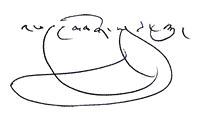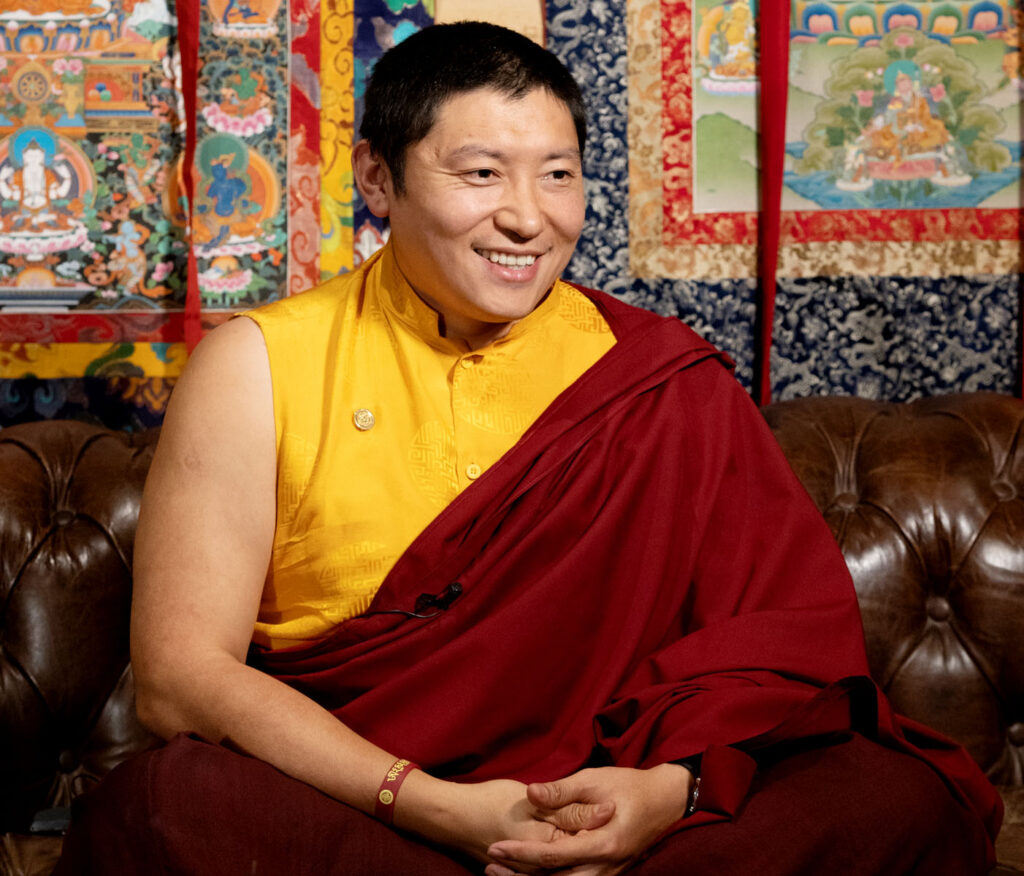Dear friends near and far
Yes, I know I’m a day late, but nonetheless, I hope that you’ve all been happy and healthy. I’ve been well and on the road since our last electronic connection. At the moment I’m at Rangjung Yeshe Gomde New York in Upstate New York and we have just finished a short program here with my uncle Chokyi Nyima Rinpoche. Last night, we performed a feast offering in union with the sangha members here at Gomde and while performing the feast, I was thinking of what to write for this Guru Rinpoche day email. I thought perhaps it might be beneficial for many of you if I briefly wrote about the meaning and benefits of performing a feast offering.
Benefits of Performing Feast Offerings
The word for ‘feast offering’ in Sanskrit is ganachakra, which if translated into Tibetan is tsok kyi khorlo, wheel of accumulation. Gathering the two accumulations of merit and wisdom is the supreme and indispensable method for clearing away the cloud of obscurations that prevent us from realizing our buddha-nature. And the practice of feast offerings is one of the most skillful ways to swiftly gather the accumulations and also purify our obscurations and mend our broken samayas.
In many of Guru Rinpoche’s treasure teachings, it says that performing feast offerings generates tremendous merit. And there have been many instances when Guru Rinpoche himself has appeared in person during feast offerings and blessed the practitioners who were calling upon him with unwavering devotion.
Although we are all practicing different sadhanas and so on, all of which have their own individual feast offering texts, they all have the same benefits and the same purpose: gathering the accumulations of merit and wisdom and purifying our obscurations. For those of you who perform feast offerings on special days of the lunar calendar, such as Guru Rinpoche day (10th) and Dakini day (25th), I would like to make one simple suggestion: in order to create auspicious coincidences (or tendrel) for yourself and others, it’s very important to begin your practice by supplicating Guru Rinpoche with the Seven Line Prayer. And for those of you who are not yet familiar with the practice of feast offerings, simply reciting this prayer at least three times on those days will be extremely beneficial for your practice.
In one of the treasure teaching revelations of Guru Chöwang, one of the five Tertön Kings, it is said that when supplicating Guru Rinpoche with the Seven Line Prayer:
Pray in this way over and over again.
Create a feeling of yearning and longing
So intense that tears spring from your eyes.If the rapture of devotion overwhelms you,
Breathe out strongly, and then leave everything as it is.Clear and awake, focused and undistracted, look within.
The Seven Line Prayer: Supplication to Guru Rinpoche
Invoking the Guru with Unwavering DevotionHung Orgyen yülgyi nubjang tsam
Hung On the northwest border of the country of Uddiyana,
Pema gesar dongpo la
On the anthers of a lotus flower,
Yamtsen chok gi ngödrub nye
You attained the marvelous supreme siddhi,
Pema jungney shesu drag
Renowned as the Lotus Born.Khordu khandro mangpö kor
Surrounded by a retinue of many dakinis,
Kyekyi jesu dagdrub kyi
Following you, I will reach accomplishment.
Jingyi labchir shegsu sol
Please come and bestow your blessings.Guru pema siddhi hung
Where did this prayer come from? In India in the past, some non-Buddhist teachers, who despised the buddhadharma, once challenged the Buddhist scholars at Nalanda University to a scholarly debate. The Buddhist scholars however were unable to defeat these non-Buddhist teachers, and so in desperation they supplicated the vajra dakas and dakinis. That night, the Dakini Supreme Peace (Zhiwa Chog) appeared in their dreams and said, “You will not be able to defeat these non-Buddhists. If you do not invite my elder brother here—Dorje Tötreng Tsal (Vajra Skull-Garland Power, Guru Rinpoche), who lives at the Dark Cemetery—the buddhadharma will be destroyed.”
She then instructed them to arrange an elaborate feast offering on the roof of the monastery and taught them the Seven Line Prayer. When the scholars recited it, Guru Rinpoche immediately appeared miraculously from the sky. He then presided over the Buddhist scholars’ debate and so they were able to defeat the non-Buddhists. Later on in the 8th century when Guru Rinpoche came to Tibet, he taught the prayer to his close disciples and also concealed it in many treasure teachings for the benefit of future disciples.
The Seven Line Prayer refers to the outer guru, who is symbolized or represented by the manifestation of Guru Rinpoche in a physical form. However, when we talk about the ‘guru’, there are actually different levels of meaning, such as outer, inner, and secret. In terms of the inner and the secret meaning of the seven-line prayer, emptiness and co-emergent wisdom respectively are manifested.
Seal your feast offering with the aspiration of bodhichitta: may all sentient beings benefit tremendously from this feast offering, may the cloud of obscurations be cleared away, and may the blazing sun of wisdom shine through!
Sarva Mangalam,

Phakchok Rinpoche






Responses